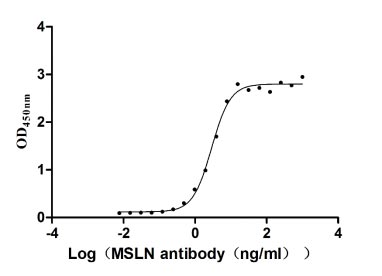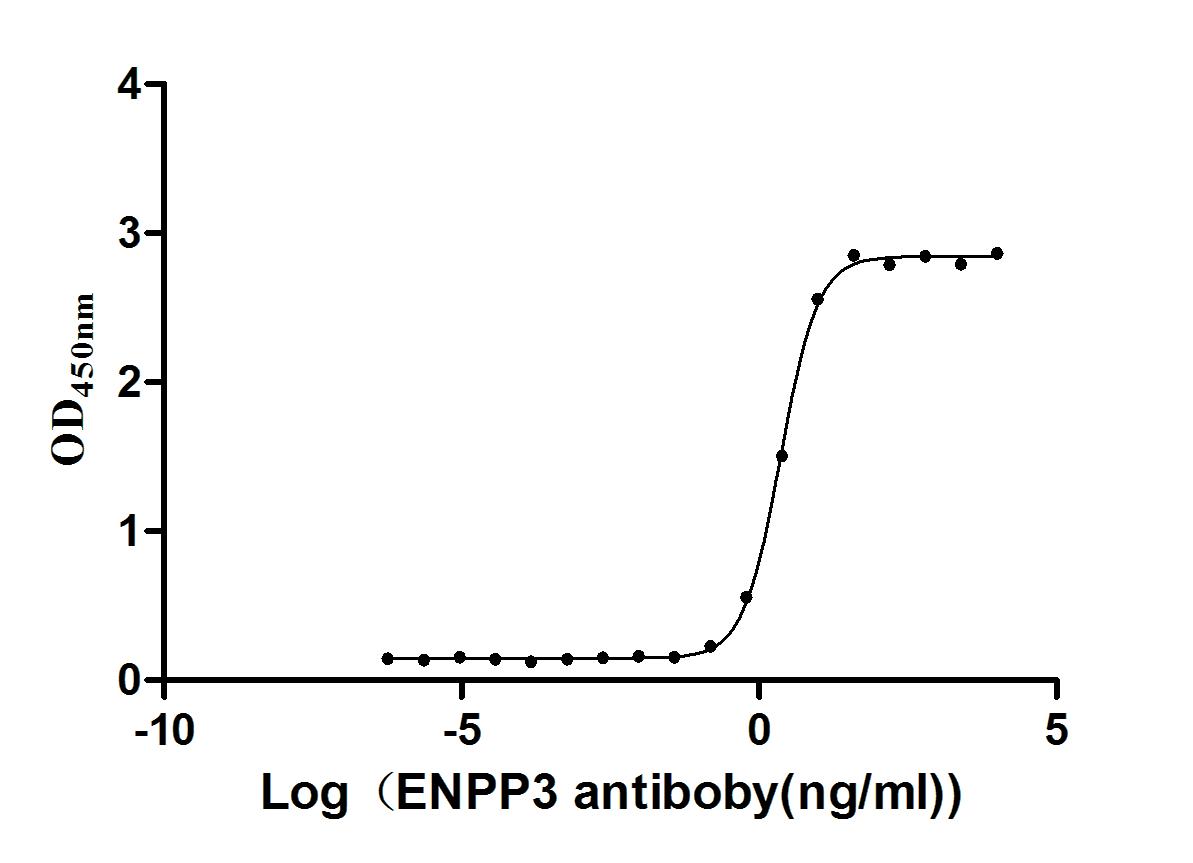Recombinant Human Receptor expression-enhancing protein 1 (REEP1)
-
中文名称:人REEP1重组蛋白
-
货号:CSB-CF862045HU
-
规格:
-
来源:in vitro E.coli expression system
-
其他:
产品详情
-
基因名:REEP1
-
Uniprot No.:
-
别名:REEP1; C2orf23; SPG31; Receptor expression-enhancing protein 1; Spastic paraplegia 31 protein
-
种属:Homo sapiens (Human)
-
蛋白长度:full length protein
-
表达区域:1-201
-
氨基酸序列MVSWIISRLVVLIFGTLYPAYYSYKAVKSKDIKEYVKWMMYWIIFALFTTAETFTDIFLC WFPFYYELKIAFVAWLLSPYTKGSSLLYRKFVHPTLSSKEKEIDDCLVQAKDRSYDALVH FGKRGLNVAATAAVMAASKGQGALSERLRSFSMQDLTTIRGDGAPAPSGPPPPGSGRASG KHGQPKMSRSASESASSSGTA
Note: The complete sequence including tag sequence, target protein sequence and linker sequence could be provided upon request. -
蛋白标签:N-terminal 10xHis-tagged
-
产品提供形式:Liquid or Lyophilized powder
Note: We will preferentially ship the format that we have in stock, however, if you have any special requirement for the format, please remark your requirement when placing the order, we will prepare according to your demand. -
缓冲液:Lyophilized from Tris/PBS-based buffer, 6% Trehalose, pH 8.0
-
储存条件:Store at -20°C/-80°C upon receipt, aliquoting is necessary for mutiple use. Avoid repeated freeze-thaw cycles.
-
保质期:The shelf life is related to many factors, storage state, buffer ingredients, storage temperature and the stability of the protein itself.
Generally, the shelf life of liquid form is 6 months at -20°C/-80°C. The shelf life of lyophilized form is 12 months at -20°C/-80°C. -
货期:Basically, we can dispatch the products out in 1-3 working days after receiving your orders. Delivery time may differ from different purchasing way or location, please kindly consult your local distributors for specific delivery time.Note: All of our proteins are default shipped with normal blue ice packs, if you request to ship with dry ice, please communicate with us in advance and extra fees will be charged.
-
注意事项:Repeated freezing and thawing is not recommended. Store working aliquots at 4°C for up to one week.
-
Datasheet & COA:Please contact us to get it.
相关产品
靶点详情
-
功能:Required for endoplasmic reticulum (ER) network formation, shaping and remodeling; it links ER tubules to the cytoskeleton. May also enhance the cell surface expression of odorant receptors. May play a role in long-term axonal maintenance.
-
基因功能参考文献:
- This study demonstrated that REEP1 gene mutation associated with hereditary spastic paraplegias in group of Polish patients PMID: 26671083
- we show that REEP1 facilitates endoplasmic reticulum mitochondria interactions, a function diminished by disease-associated mutations. PMID: 26201691
- Nonsense variants in REEP1 causing haploinsufficiency/loss of function are responsible for autosomal dominant hereditary spastic paraplegia (HSP)-type SPG31. PMID: 24986827
- Functional mutation analysis reveal that distinct pathomechanisms are associated with REEP1 mutations and shed new light on its probable functions. PMID: 24478229
- Expression of the REEP1/REEP2 subfamily appears to be restricted to neuronal and neuronal-like exocytotic tissues, consistent with neuronally restricted symptoms of REEP1 genetic disorders. PMID: 24355597
- REEP1 is a neuron-specific, membrane-binding, and membrane curvature-inducing protein that resides in the endoplasmic reticulum. PMID: 24051375
- A novel REEP1 mutation is identified in a cohort of patients with upper motor neuron syndrome. PMID: 23108492
- Whole-exome sequencing of two affected individuals revealed a single candidate variant within the linking regions, i.e., a splice-site alteration in REEP1 PMID: 22703882
- Identification of 12 different heterozygous REEP1 mutations, including two exon deletions, associated with either a pure or a complex phenotype. PMID: 21618648
- previously unreported autosomal dominant mutations in the REEP1 gene in hereditary spastic paraplegia PMID: 20718791
- Hereditary spastic paraplegias(HSP) proteins atlastin-1, spastin, and REEP1 interact within the tubularER membrane in corticospinal neurons to coordinate ER shaping and microtubule dynamics. PMID: 20200447
- Receptor expression-enhancing protein 1 gene (SPG31) mutations are rare in Chinese Han patients with hereditary spastic paraplegia. PMID: 19781397
- RTP and REEP gene expression in human circumvallate papillae and testis, both of which are sites of taste receptor gene expression. PMID: 16720576
- REEP1 is widely expressed and localizes to mitochondria, which underlines the importance of mitochondrial function in neurodegenerative disease. PMID: 16826527
- Mutations in the receptor expression enhancing protein 1 (REEP1) have recently been reported to cause autosomal dominant hereditary spastic paraplegia type SPG31. We identified 13 novel and 2 known REEP1 mutations in 16 familial and sporadic patients. PMID: 18321925
- Our results confirm the previously observed mutation range of 3% to 6.5%, respectively, and they widen the spectrum of REEP1 mutations PMID: 18644145
- Results identify the frequency of REEP1 mutations in both autosomal dominant HSP (ADHSP) and sporadic spastic paraparesis (SSP) and analyse the genotype/phenotype correlation of mutations so far described in REEP1. PMID: 19034539
- A novel splice-site mutation (REEP1 c417+1g>a) was identified in chiease family of ADHSP. PMID: 19072839
收起更多
-
相关疾病:Spastic paraplegia 31, autosomal dominant (SPG31); Neuronopathy, distal hereditary motor, 5B (HMN5B)
-
亚细胞定位:Membrane. Mitochondrion membrane; Multi-pass membrane protein. Endoplasmic reticulum.
-
蛋白家族:DP1 family
-
组织特异性:Expressed in circumvallate papillae and testis.
-
数据库链接:
HGNC: 25786
OMIM: 609139
KEGG: hsa:65055
STRING: 9606.ENSP00000438346
UniGene: Hs.368884





-AC1.jpg)
-AC1.jpg)













